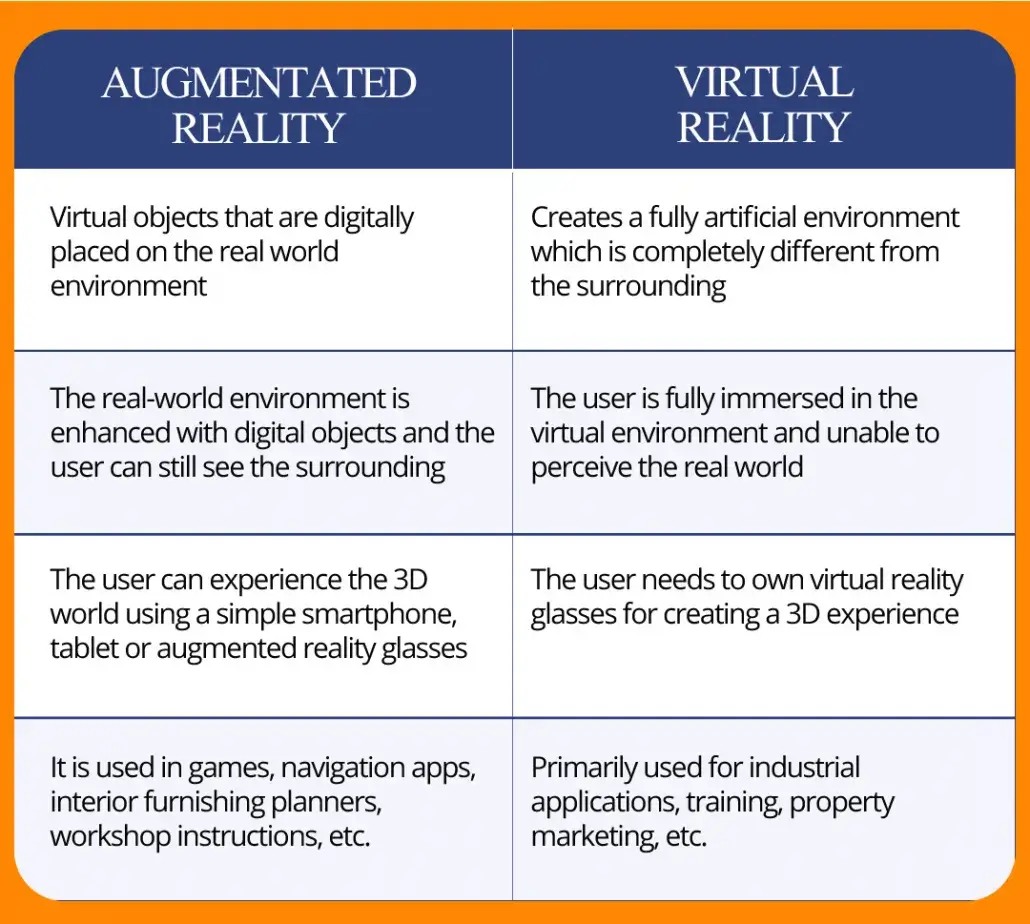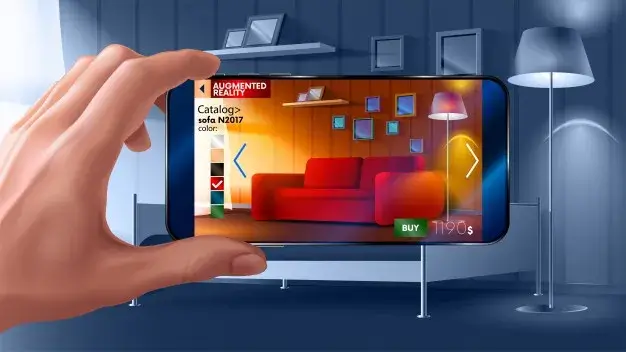Augmented Reality vs Virtual Reality I Differences with examples

Here's What We've Covered!
Well, everyone is familiar with movies like Inception, Avatar, Matrix, and we all are fans of the famous Star Trek series, aren’t we? But, what is common in all those movies I mentioned?
Yes, you are right, all those movies excite us to think about the world which is not real, but The Virtual World.
“What is real and what is not” – this expression can’t be truer than today. No no no, we are not discussing anything even adjacent to spirituality, but the expression simply tries to summarize my astonishment at the growing use of “augmented reality” and “virtual reality” these days, such that the boundary between the real world and the virtual world is gradually diffusing. To most of us, both the technologies sound very similar as they bleed over into each other a bit. As such, there is a prevailing confusion that “augmented reality” and “virtual reality” are the same thing – but they are more like cousins and not twins. They are two very different concepts which are evident from Paul Milgram’s “Reality-Virtuality continuum” (diagram shown below) that demonstrates the spectrum from the real environment to a virtual environment.
If you are still not sure how they are different then let me explain to you in further detail with some examples.
WHAT IS AUGMENTED REALITY?
As can be seen from the above continuum, augmented reality is an extension of the real environment towards the virtual environment. In augmented reality, as a user, you will be able to visualize and interact with the real world while the digital content will be added to it.
One of the prime examples of augmented reality is “Pokemon Go” – where millions of people across the world can be seen running on the streets with their smartphones in the quest for teeny tiny virtual creatures. So, it is as simple as having a smartphone, then you download an augmented reality app and you are good to go. There are several applications and devices available to experience augmented reality and some of them are discussed below.
Let us take the example of Microsoft HoloLens which is an augmented reality device with various enterprise-level “smart glasses”. The glasses are transparent and let you see things in front of you as if you are wearing a weak pair of sunglasses. This technology is intended for providing completely free movement and lets you project images over whatever you look at. So, this device basically lets you place virtual floating app windows and 3D decorations around you. The Microsoft HoloLens uses advanced pattern recognition coupled with a stereoscopic camera that helps in tracking its surroundings all the time.
Pokémon Go is an extension of this technology to smartphones where it uses your phone’s camera to sense your surroundings and place additional information on top of it to build an enriching experience. Basically, the mobile app virtually places a Pokémon on your screen, on top of whatever the camera can capture in front of it.
Some of the fields in which augmented reality finds applications are medical uses (neuro-surgery), navigation apps, sight-seeing in tourism, maintenance & repair of machinery and advertisements & promotions.
WHAT IS VIRTUAL REALITY?
Virtual reality headsets are an entirely different proposition compared to augmented reality as it completely obscures your vision of the surroundings and gives you the impression that you are in a different world. Some of the common virtual reality devices are HTC Vive and Oculus Rift. The virtual reality technology is capable of immersing the users into a completely different virtual world which is generated by using a computer interface. Some of the most advanced virtual reality devices even offer freedom of movement which means that as a user you can move in a digital environment and hear sounds.

The virtual reality headsets are built in such a way that they completely block out your vision and as such when you put them on while it is turned off, you might think that you are blindfolded. However, once you switch it on, the LCD or OLED panels inside get activated and start refracting lights to completely fill your field of vision with the digitally built environment. The virtual reality technology is used for various applications that include the game, 360֯ video or it may be just a virtual space. Basically, you are virtually transported to a different surrounding such that the outside real-world environment is replaced with a virtual one.
Some of the fields in which virtual reality finds application is military in the UK and the US, sports industry, treatment of post-traumatic stress, practice surgeries and revolutionizing the education industry.
CONCLUSION
So, it can be concluded that despite having almost similar designs of the devices, augmented reality and virtual reality accomplish two very different things in two very different ways. While augmented reality devices are an extension to the real world by overlaying digital objects on the surrounding, virtual reality devices replace the real world and take you to somewhere else. Both technologies are very powerful, show a lot of promise and are in the process of making their mark with consumers. Although it can be predicted that in the future these technologies are going to change the way we use our computers, it is very difficult to say whether one or both of them will be there in the long run.Read more: Impact of Data Science on Retail Industry
Resent Post
>
Emerging commerce career options in India (2026): From CA to Data Analyst
>
ACCA Opportunities You Didn’t Know About – Think Beyond Audit!
>
Which Courses After 12th Commerce With High Salary Are in Demand Worldwide?
>
How to Find ACCA Jobs Online After Qualifying: Real Portals, Tips & Career Guidance
>
Financial Modelling Classes in Hyderabad: Your Guide to the Best Institutes
Follow Us For All Updates!






